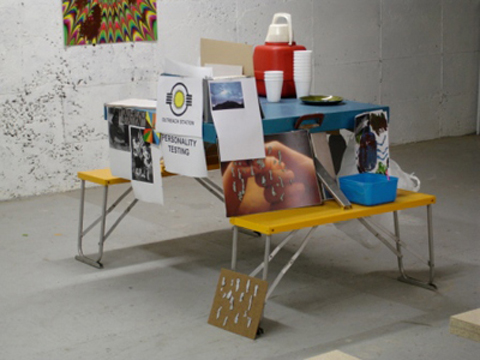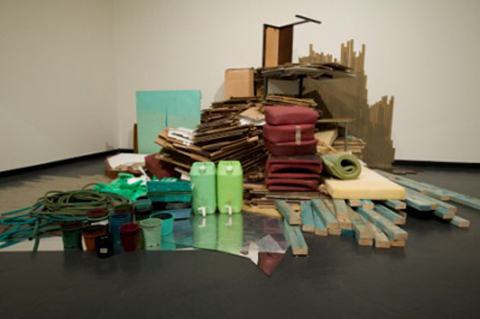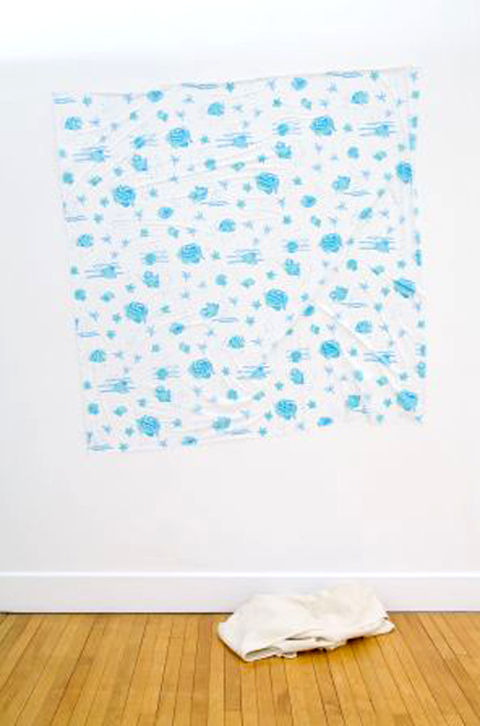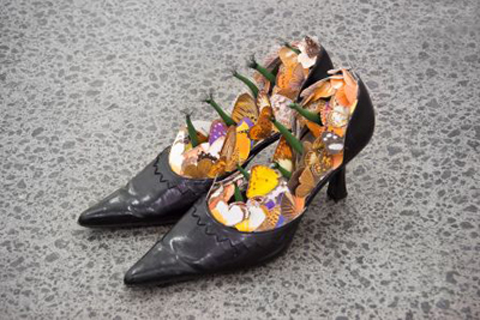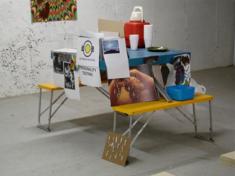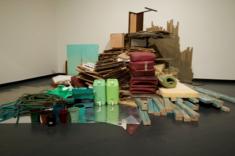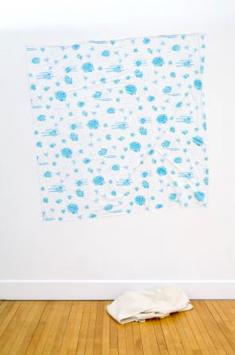Rob Garrett
Curator
This Art's Rubbish
by Amanda Wayers
Auckland artists dumping cardboard boxes and tatty blankets into white-washed galleries are being lauded as the cutting edge of contemporary art. Amanda Wayers asks where the beauty is in a hunk of junk.
This is the work of Eve Armstrong, a collector and arranger of other people’s rubbish and one of several successful local artists currently working in the medium of “found objects”. She makes sculptures from boxes, foam rubber, piping and buckets piled into carefully considered mounds. This month Armstrong is off to Hong Kong on an Asia New Zealand Foundation artist’s residency and she was an inaugural recipient of the Arts Foundation of New Zealand New Generation Award in 2006. Armstrong and fellow assemblage artists Dan Arps, Simon Denny and Peter Madden have featured in major public exhibitions here and internationally and are represented in some of the country’s most significant collections. These Auckland artists are hot.
Is the art world taking the piss?
We often expect art to be elevated above the everyday, to exist in a world of beauty, inspiration and (for some) spirituality. Rubbish doesn’t fit into this picture. Its waste: by definition worthless, useless and unappealing. By using rubbish to make their artworks, the artists are asking us to rethink how and why we value things. We can still appreciate this work as a product of skill, or as beauty, but only if we define these qualities in new ways.
Armstrong says she wants us to value the form and function of ordinary things that we normally discard without thinking. She is interested in the incidental “energy and beauty of the things that people make, like piles of rubbish on the street”, and “the ordinary, everyday creativity of people working in the city”. Artworks in this genre suggest we apply ways of seeing and appreciating traditionally reserved for art to everyday life. “It’s about taking a second look,” says Armstrong.
The work is often made to look as if it is haphazard, but this carefree aesthetic is in fact the result of skilled labour. “There is a lot of process that you don’t see,” says Armstrong who — like Madden, Arps and Denny — is a graduate of Elam School of Fine Arts. The specialist training shows in the artists’ careful compositions of textures, forms and colours, and in the way their work hooks into art history, current theory, and the contemporary urban environment.
However, they don’t want to be seen as artistic show-offs and dislike the way traditional art appreciation often centres on the artist rather than the artwork. “I care about the way it looks, but I don’t want it to look like I’ve spent half my life on it,” says Arps.
So, how does the viewer make sense of this junk? One way is to treat the objects that the artwork brings together, and the relation-ships between these objects, as a source of stories. These stories might be about the materials and their uses, or people’s activities and lives. “Found objects carry a history with them,” says Arps. “They tap into a pre-existing world.” Armstrong’s foam cushions must have been useful to many on a church pew or in a community hall before being discarded and they will be familiar to most of us in some way.
Madden also uncovers beauty in what we have rejected, cutting pictures out of old magazines and refashioning them into richly layered whimsical objects, like a pair of worn shoes filled with tiny butterflies.
Found objects don’t just refer to the past. Denny uses them to suggest what might happen in the future, assembling brooms or blankets or boxes into delicately balanced sculptures that seem about to topple into unruly heaps.
Another way of approaching this art is as an experience. Arps says his work is about how physical environments can affect the way we think and feel. Arps wants his installations to “open up a dream space” to the viewer, in which “you are not sure what you are doing or why you are there”.
You know Arps’ Outreach (a portable picnic table covered with images, plastic cups and a “personality testing” sign) is trying to convince you of something but there is no way of figuring out exactly what. The lack of clear message frustrates our expectations and our natural desire to interpret and categorise; to make sense of what we see. The purpose of these installations is to unsettle. They seek to shake us out of our fixed mindset and move us into a creative space, where we are free to make connections and fill the gaps ourselves.
“Confusing is not bad,” says Arps. This effect can be momentary or lasting, depending on your level of immersion in the experience. Viewing this art is not a passive pastime. The artists invite you to explore your own reaction, even if it’s negative. “It’s about the feeling the viewer has,” says Arps.
You don’t need to be an art expert to get into this junk — you just need to think about how you feel.
Amanda Wayers
